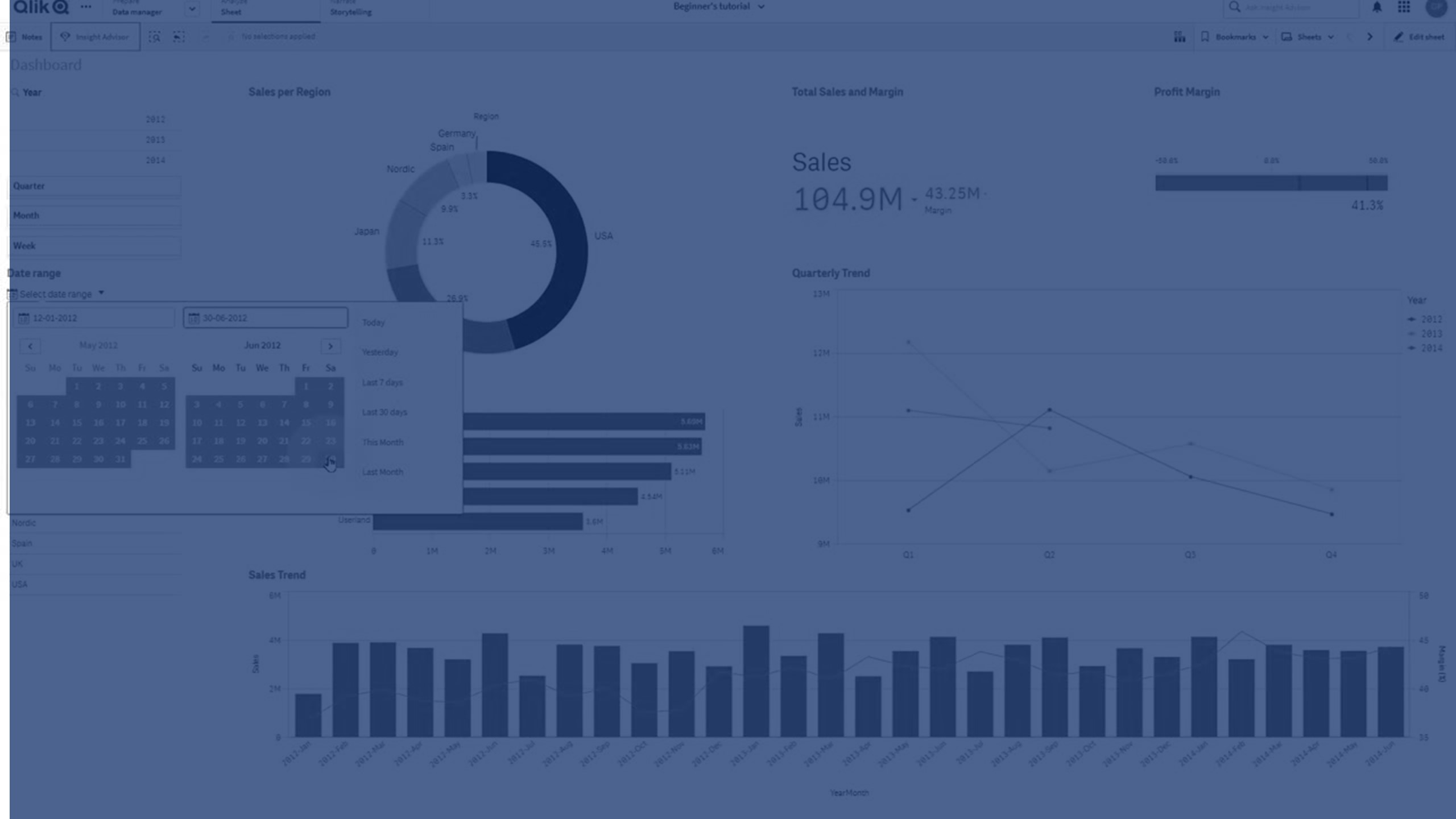The date range picker (Date picker) lets you select a single date or a range of dates from a calendar.

Date picker has two modes:
- In single date mode, you select from a simple calendar.
- In date interval mode, you can select a range from the calendar, or any of the predefined ranges that are available.
Dates associated to data appear in black in the calendar. Dates with no associated data appear in grey. Users can select any date.
When to use the date range picker
The date range picker is useful when you have one or more date fields that you need to use to filter your selections. Unlike a filter pane, a date range picker will only display date fields.
